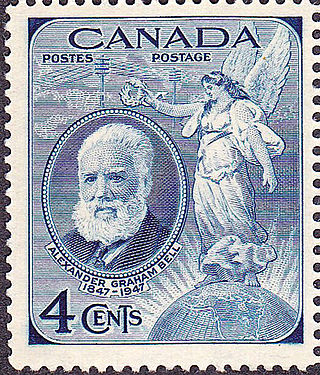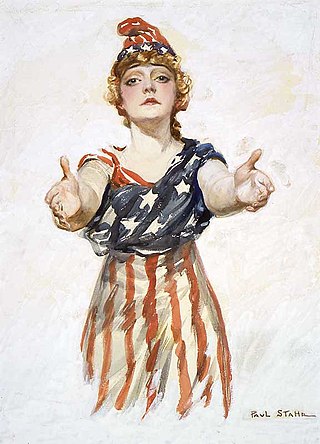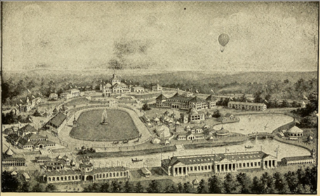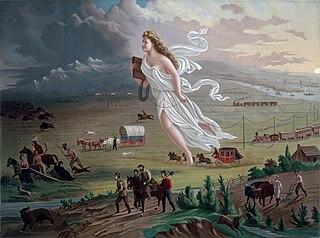
The World's Columbian Exposition, also known as the Chicago World's Fair, was a world's fair held in Chicago from May 5 to October 31, 1893, to celebrate the 400th anniversary of Christopher Columbus's arrival in the New World in 1492. The centerpiece of the Fair, held in Jackson Park, was a large water pool representing the voyage that Columbus took to the New World. Chicago won the right to host the fair over several competing cities, including New York City; Washington, D.C.; and St. Louis. The exposition was an influential social and cultural event and had a profound effect on American architecture, the arts, American industrial optimism, and Chicago's image.

The Pan-American Exposition was a world's fair held in Buffalo, New York, United States, from May 1 through November 2, 1901. The fair occupied 350 acres (0.55 sq mi) of land on the western edge of what is now Delaware Park, extending from Delaware Avenue to Elmwood Avenue and northward to Great Arrow Avenue. It is remembered today primarily for being the location of the assassination of United States President William McKinley at the Temple of Music on September 6, 1901. The exposition was illuminated at night. Thomas A. Edison, Inc. filmed it during the day and a pan of it at night.

A commemorative stamp is a postage stamp, often issued on a significant date such as an anniversary, to honor or commemorate a place, event, person, or object. The subject of the commemorative stamp is usually spelled out in print, unlike definitive stamps which normally depict the subject along with the denomination and country name only. Many postal services issue several commemorative stamps each year, sometimes holding first day of issue ceremonies at locations connected with the subjects. Commemorative stamps can be used alongside ordinary stamps. Unlike definitive stamps that are often reprinted and sold over a prolonged period of time for general usage, commemorative stamps are usually printed in limited quantities and sold for a much shorter period of time, usually, until supplies run out.

A national personification is an anthropomorphic personification of a state or the people(s) it inhabits. It may appear in political cartoons and propaganda. In the first personifications in the Western World, warrior deities or figures symbolizing wisdom were used, to indicate the strength and power of the nation. Some personifications in the Western world often took the Latin name of the ancient Roman province. Examples of this type include Britannia, Germania, Hibernia, Hispania, Helvetia and Polonia.

Columbia, also known as Lady Columbia or Miss Columbia, is a female national personification of the United States. It was also a historical name applied to the Americas and to the New World. The association has given rise to the names of many American places, objects, institutions and companies, including the District of Columbia; Columbia, South Carolina; Columbia University; "Hail, Columbia"; Columbia Rediviva; and the Columbia River. Images of the Statue of Liberty largely displaced personified Columbia as the female symbol of the United States by around 1920, and Lady Liberty was seen as both an aspect of Columbia and a rendition of the Goddess of Liberty. She is the central element of the logo of Hollywood film studio Columbia Pictures.

The Cotton States and International Exposition was a world's fair held in Atlanta, Georgia, United States in 1895. The exposition was designed "to foster trade between southern states and South American nations as well as to show the products and facilities of the region to the rest of the nation and Europe."

Augustus Goodyear Heaton was an American artist, author and leading numismatist. He is best known for his painting The Recall of Columbus and among coin collectors for writing A Treatise on Coinage of the United States Branch Mints, which introduced numismatists to mint marks.

William Lindsay was an American politician. He served as a Democratic U.S. Senator from Kentucky from 1893 to 1901.

Luke 9 is the ninth chapter of the Gospel of Luke in the New Testament of the Christian Bible. It records the sending of the twelve disciples, several great miracles performed by Jesus, the story of his transfiguration, Peter's confession and the final departure from Galilee towards Jerusalem. Scottish minister William Robertson Nicoll describes this chapter as unfolding "sundry particulars which together form the closing scenes of the Galilean ministry". The book containing this chapter is anonymous, but early Christian tradition uniformly affirmed that Luke the Evangelist composed this Gospel as well as the Acts of the Apostles.

The Gallic rooster is a national symbol of France as a nation, as opposed to Marianne representing France as a state and its values: the Republic. The rooster is also the symbol of the Wallonia region and the French Community of Belgium.

The coat of arms of Mexico is a national symbol of Mexico and depicts a Mexican (golden) eagle perched on a prickly pear cactus devouring a rattlesnake. The design is rooted in the legend that the Aztec people would know where to build their city once they saw an eagle eating a snake on top of a lake. The image has been an important symbol of Mexican politics and culture for centuries. To the people of Tenochtitlan, this symbol had strong religious connotations, and to the Europeans, it came to symbolize the triumph of good over evil.

Uncle Sam is a common national personification of the federal government of the United States or the country in general. Since the early 19th century, Uncle Sam has been a popular symbol of the U.S. government in American culture and a manifestation of patriotic emotion. Uncle Sam has also developed notoriety for his appearance in military propaganda, popularized by a 1917 World War I recruiting poster by James Montgomery Flagg.

American Progress is an 1872 painting by John Gast, a Prussian-born painter, printer, and lithographer who lived and worked most of his life during 1870s in Brooklyn, New York. American Progress, an allegory of manifest destiny, was widely disseminated in chromolithographic prints. It is now held by the Autry Museum of the American West in Los Angeles, California.

Nymph and Fawn is a public artwork by American artist Isidore Konti and located within the Oldfields–Lilly House & Gardens estate on the grounds of the Indianapolis Museum of Art (IMA), near Indianapolis, Indiana. Created in 1917, the bronze sculpture is also a working fountain. It portrays a female nude pouring water from an urn while standing beside a small fawn.

"The Blind Man and the Lame" is a fable that recounts how two individuals collaborate in an effort to overcome their respective disabilities. The theme is first attested in Greek about the first century BCE. Stories with this feature occur in Asia, Europe and North America.

The Lafayette dollar was a silver coin issued as part of the United States' participation in the Paris World's Fair of 1900. Depicting Gilbert du Motier, Marquis de Lafayette with George Washington, and designed by Chief Engraver Charles E. Barber, it was the only U.S. silver dollar commemorative prior to 1983, and the first U.S. coin to depict American citizens.

The Great God Pan is a bronze sculpture by American sculptor George Grey Barnard. Since 1907, it has been a fixture of the Columbia University campus in Manhattan, New York City.

The Woman's Building was designed and built in June 1892, for the World's Columbian Exposition held in Chicago in 1893; under the auspices of the Board of Lady Managers. Out of the twelve main buildings for the Exhibition, the Woman's Building was the first to be completed. It had an exhibition space as well as an assembly room, a library, and a Hall of Honor. The History of the World's Fair states, "It will be a long time before such an aggregation of woman's work, as may now be seen in the Woman's Building, can be gathered from all parts of the world again." The purpose of the building was to highlight woman's achievements, and challenge the traditional ways of thinking at the time it was built. The Woman's Building was planned, designed, and decorated entirely by women under the direction of the board of lady managers.

The Wonotobo Falls are a series of waterfalls in the Courantyne River in Sipaliwini District, Suriname near the border with Guyana. The waterfalls are not navigable. A pre-Columbian petroglyph site is located near the falls.

The Board of Lady Managers of the World's Columbian Exposition was organized November 19, 1890. It oversaw the construction of The Woman's Building in Chicago and organized the exposition's World's Congress of Representative Women (1893). A cookbook with autographed recipes of board members was also issued.































